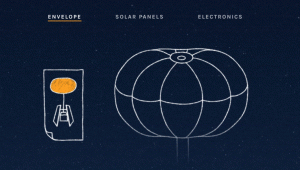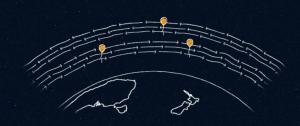In the race to bring internet to the entire world are two main competitors, Facebook and Google. Facebook developed the Aquila drone (which you can read about in our article here: Facebook “Aquila” Solar Drone First Flight), while Google created the ballon centered Project Loon.
Project Loon relies on balloons sent up 20km from the surface to the Stratosphere. For comparison, commercial airplanes usually fly below 12 km from the surface. Hanging from the ballon are the transmitting electronics surrounded by solar panels. The electronics transmit LTE signals that can be read from the ground.
The direction of the balloons is controlled by sending them up and down into different layers of Stratosphere winds. Latest models, which now can take just hours to make using an automated process, can now last over 100 days before being controlled down to earth and recovered.
Testing began in June 2013 on the south island of New Zealand. Since then, testing has occurred in other southern hemisphere countries as well as some tests in the US. One of the goals of the testing is to get a ring of balloons around latitudes in the southern hemisphere to give testers uninterrupted connections along those test latitudes.
Below is a video demonstrating how the Google Loon Project has developed over time:
You can learn more about the project on the official website: https://www.google.com/loon/



Facebook Comments